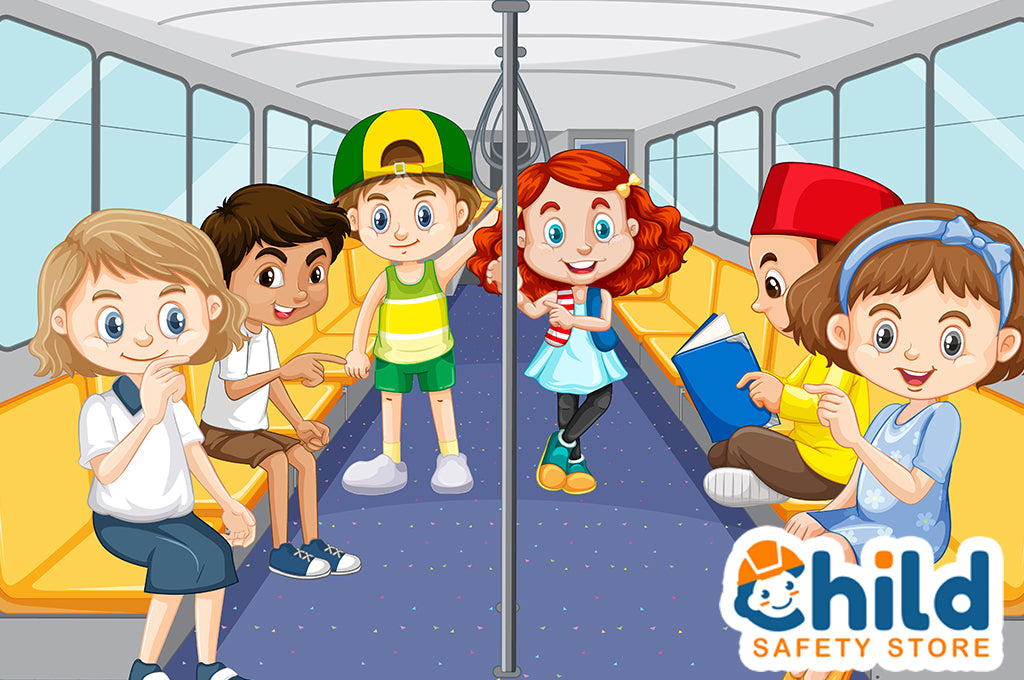
Child Safety on Public Transportation: 6 Essential Tips
When traveling with little ones, parents need to be concerned with child safety on public transportation. This includes all modes of traveling, like buses and trains. As a parent, keeping kids safe is always the top priority. That goes double when you’re using public transportation.

This goes far beyond school bus safety. From buses to trains and subways, navigating these systems can be overwhelming for newbies. However, with the right knowledge and precautions, you can confidently travel with your little one. In today’s blog post, we'll discuss essential guidelines for child safety on public transportation. By the end, you and your kids will feel empowered to make informed decisions and stay safe during your journeys.
Child Safety on Public Transportation Starts With Careful Planning
Before embarking on any public transportation adventure, it's crucial to plan your route ahead of time. Look for the most child-friendly routes, which might include options with fewer transfers or shorter travel times. Utilize online journey planners or mobile apps that provide real-time updates. Avoid peak hours if possible, as crowded transportation can increase the risk of accidents or getting separated from your child. Finally, be sure to take note of any accessible stations or ramps. These can be very helpful for parents using a stroller or a child in a wheelchair.
Teach the Basics of Child Safety on Public Transportation
Kids need to be prepared for the road ahead. In this way, start by explaining the concept of public transportation. After that, reinforce the importance of safety rules. The same as you’d teach them how to stay safe in the streets, you must explain the potential dangers of public transportation.

When traveling with children on public transportation, they should always stay close. Teach them to hold your hand whenever possible. Additionally, always stand behind the designated lines while waiting for the bus or train. These are designed to keep you out of potential dangers, including being struck by a vehicle.
Reinforce the need to listen to announcements, follow instructions from transit staff, and avoid playing near the platform edges. Practicing these basic guidelines for child safety on public transportation will help to reduce risks and make for a more enjoyable ride.
Arrive Early and Stay Visible
To avoid the stress of rushing onto a crowded vehicle, arrive at the train station or bus stop early. This allows you to choose a strategic spot where you can keep an eye on your child and the surroundings.
Kids should stay visible by wearing bright-colored clothing. Even better, they can wear safety accessories such as reflective stickers or wristbands. This makes it easier for transit staff and other passengers to identify you and your child, especially in busy or crowded environments.
Properly Secure Your Child
When boarding buses or trains, always ensure your child's safety by securing them in an age-appropriate restraint system. For infants, you can use rear-facing car seat. However, toddlers and older children should be secured in forward-facing car seats or booster seats, depending on their height and weight.

If your child is not in a car seat, encourage them to sit next to you or hold onto a handrail while standing, ensuring that they maintain balance and stability throughout the journey.
Stay Engaged and Aware
Being vigilant is essential when traveling with your child on public transportation. Keep an eye on your surroundings, and pay attention to any suspicious activity or individuals that might make you feel uncomfortable. Maintain an open line of communication with your child, encouraging them to quietly report any concerns or unusual behavior they might observe.
Remember, if you see something, say something. It is better to be cautious than to put you or your child in harm’s way. By staying engaged and aware, you can quickly address potential safety issues and take appropriate action to protect your child.
Emergency Preparedness
Prepare for unexpected situations by discussing emergency protocols with your child. Teach them how to recognize the emergency exits and what to do in case you get separated. Provide them with important contact information, such as your phone number and home address, to ensure they can seek help if needed.
Consider carrying a small first aid kit and any necessary medications with you. Furthermore, an emergency backpack card with contact information and essential medical information for your child can be extremely helpful.
The Wheels on the Bus…
Public transportation can be a convenient and eco-friendly option for families, but it's crucial to prioritize your child's safety throughout the journey. By following these child safety guidelines, planning ahead, and staying vigilant, you can navigate public transportation with confidence.
Remember, teaching your child about safety and engaging them in the process will not only ensure their well-being but also empower them to become responsible and informed travelers from an early age. Safe travels!
